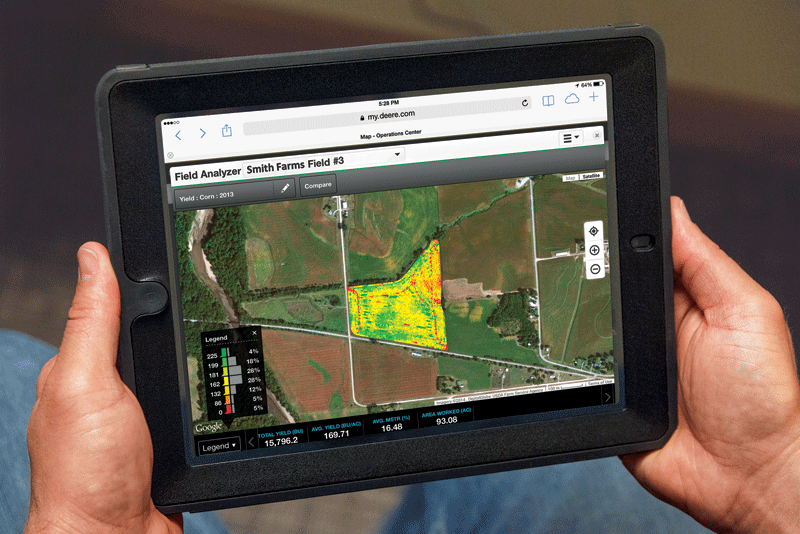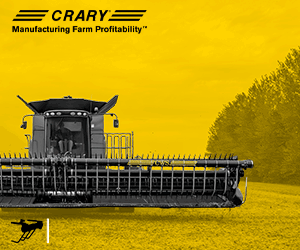Sorting through the data
JOHN DEERE OPERATIONS CENTER
IT SEEMS THERE is no end to the amount of data that is being generated on farms through the use of advanced machinery, precision agriculture tools, and GPS systems. The question everyone is asking is, “What do I do with it?”

“Data is totally useless unless we can analyse it and have an avenue to create solutions we can apply at the end of the season and into next year,” says Jamie Blythe, the operator of a 3,500 acre corn, soybean, wheat, cotton, and livestock operation in Courtland, Alabama.
Turning machine and agronomic data into useful information is the challenge several agricultural-focused companies have taken on. For John Deere, their solution is the MyJohnDeere Operations Center. It’s a platform Blythe was involved in testing along with Shannon Huber Norwood, the integrated solutions manager at TriGreen Equipment, her local dealer.
The Operations Center allows producers to collect data, access it easily, and use various tools, such as Field Analyzer, to gain insights from data collected through the entire farming cycle.
“I think of the Operations Center as a secure web-based portal that interfaces with my equipment and software,” says Blythe. “We can access and manage massive amounts of data that we are collecting every year. It not only lets me keep track of agronomic data but it also lets me keep tabs on my machinery and the progress of my field work.”
According to Norwood, the Operations Center has three key features that would benefit farm managers: location history, machine management, and reports. The location history shows a trail of which fields the operator was in and what roads were taken to get between fields. Machine management includes the ability to tell how much fuel is in the tank, what direction the machine is going, and what speed it is going at.
“I like the feature which gives me a quick, basic overview of where the equipment is in the field,” says Blythe, who works with two employees to run all of the farm’s crop equipment. “I can keep track of the progress of our field work, even if I am not the one operating that piece of equipment.”
The ability to easily generate reports is also important to Blythe. “I have eight landlords that I work with and often need to pull up a seeding report or a yield report for their specific farm. The report feature is especially important when I’m sharing data with my family, like my mom in Tennessee who keeps track of all our crop inputs.”
Farmers remain in control of their data within the Operations Center and can select who they want to have access to it; such as dealers, crop consultants, and advisers. And with wireless data transfer, a specialist like Norwood can provide a solution to a customer a lot faster than driving out to the field.
“Wireless data transfer lets me be anywhere to send files to a machine running in a field. The machine doesn’t even have to be running, I can upload it to the website, hit send, and it will be there when the operator turns on the machine,” she explains.
Farmers can also upload their own data for their farm. “I can send up the prescriptions I have written to all of our equipment without having to run all over the place with a thumb drive in my hand. And I know that every prescription is going to be consistent between our multiple planters,” says Blythe.
At the end of the day, Blythe says she likes the way the Operations Center has allowed her to keep her commitment to precision agriculture. “If we’re going to survive and keep going to a fourth generation, we need to know how to maximize our efficiency. Data is not static. We keep refining our solutions every year. This in turn makes us better stewards of the land.” •








